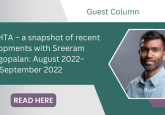New framework utilizing real-world evidence to assess healthcare value developed as alternative to QALYs

Alliance for Aging Research, in collaboration with Milliman, has developed the Standard of Living Valuation (SoLV) framework to offers a more equitable, real-world alternative to QALYs, focusing on socioeconomic factors to assess healthcare value.
As healthcare costs continue to rise, the debate over how to measure the value of therapies has become more urgent. This discussion has intensified with the Inflation Reduction Act (IRA), which introduced government price intervention for select pharmaceuticals for Medicare beneficiaries, prompting concerns about whether prices should reflect the true value of therapies, and how that value should be assessed. To address these concerns, the Alliance for Aging Research, in collaboration with Milliman, has introduced the Standard of Living Valuation (SoLV) framework, a novel approach that leverages real-world evidence (RWE) to assess healthcare value more comprehensively and equitably.
The limitations of QALYs in value assessment
Traditionally, quality-adjusted life years (QALYs) have been used to measure the value of healthcare interventions. QALYs compare the cost of interventions to the years of life gained and their quality, serving as a benchmark in cost-effectiveness analyses. Many health technology assessment bodies, including the UK’s National Institute for Health and Clinical Excellence (NICE) and the US’s Institute for Clinical and Economic Review (ICER), utilize QALYs in their evaluations.
However, QALYs have faced criticism for potentially discriminating against vulnerable groups such as the elderly, people with disabilities, and those with chronic illnesses. This concern has led to support for legislative efforts to ban the use of QALYs in federal decision-making by over 100 patient advocacy groups, including the Alliance for Aging Research.
Peter Neumann (Director, Center for the Evaluation of Value and Risk in Health, Institute for Clinical Research and Health Policy Studies, Tufts Medical Center; and Professor, Tufts University School of Medicine) acknowledged the challenges associated with QALYs in a video interview on The Evidence Base:
“Cost-effectiveness analyses that use QALYs are always going to be fraught with challenges. We use this information because we’re trying to inform decisions about how we can best improve population health, given resource constraints. But often when people hear cost-effectiveness or QALYs, they think about someone, a payer, denying care.”
Introducing the Standard of Living Valuation (SoLV) framework
Unlike QALYs, which focus on clinical outcomes, the SoLV framework emphasizes socioeconomic factors and their impact on health outcomes, recognizing that standard of living (SoL) factors, such as income, education, housing, and diet, are often more significant determinants of health than health care itself.
The SoLV model quantifies the relationship between income and health outcomes, allowing for a more precise valuation of therapies based on real-world data (RWD). For instance, if a $40,000 income difference correlates with a 40% difference in disease incidence, and a therapy reduces incidence by 30%, the treatment’s value could be calculated at $30,000 per year. This approach provides a more comprehensive assessment of healthcare value, especially for therapies addressing conditions with significant socioeconomic-based health disparities.
Adina Lasser, Public Policy Manager at the Alliance for Aging Research, highlighted the framework’s benefits:
“The use of SoLV is advantageous for patients and gets to the root of what matters to them by incorporating data and other considerations that reflect their real-world experience of the healthcare system.”
One proposed key advantage of the SoLV framework is its use of reference values not derived from healthcare spending, avoiding the assumption that current healthcare prices are appropriate. This feature, combined with its focus on real-world socioeconomic factors, makes SoLV a more equitable and patient-centered measure of value.
To demonstrate the practical application of the SoLV framework, a case study focusing on stroke, atrial fibrillation, and the use of direct oral anticoagulants (DOACs) illustrates how SoLV can evaluate the value of therapies beyond traditional QALY-based assessments. This approach considers factors such as patients’ ability to maintain their standard of living and the broader socioeconomic impact of treatment.
By addressing many of the policy and technical challenges associated with existing methods, the SoLV framework offers a more nuanced and equitable approach to healthcare valuation. Its emphasis on RWE and socioeconomic factors provides a valuable alternative to traditional value metrics, potentially leading to more comprehensive and patient-centered healthcare decision-making.
Want regular updates on the latest real-world evidence news straight to your inbox? Become a member on The Evidence Base® today>>>






